Triumphantly, the bell was installed on Sunday September 25, 2022. The first new bell for 3 years! It is a triumph for all concerned, above all for Libby Scarfe.
Fairly obviously the pictures show varying states of the tide..
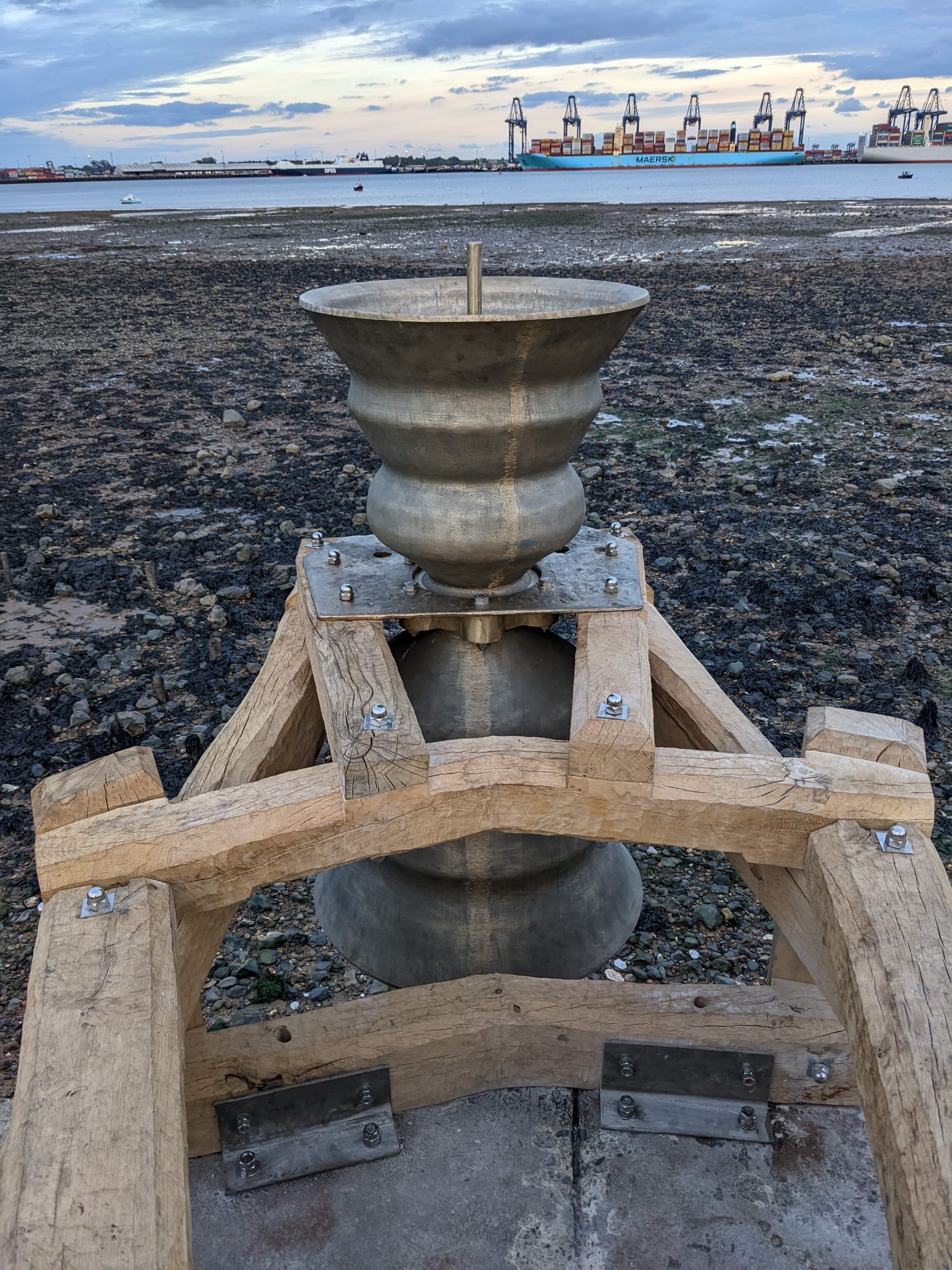
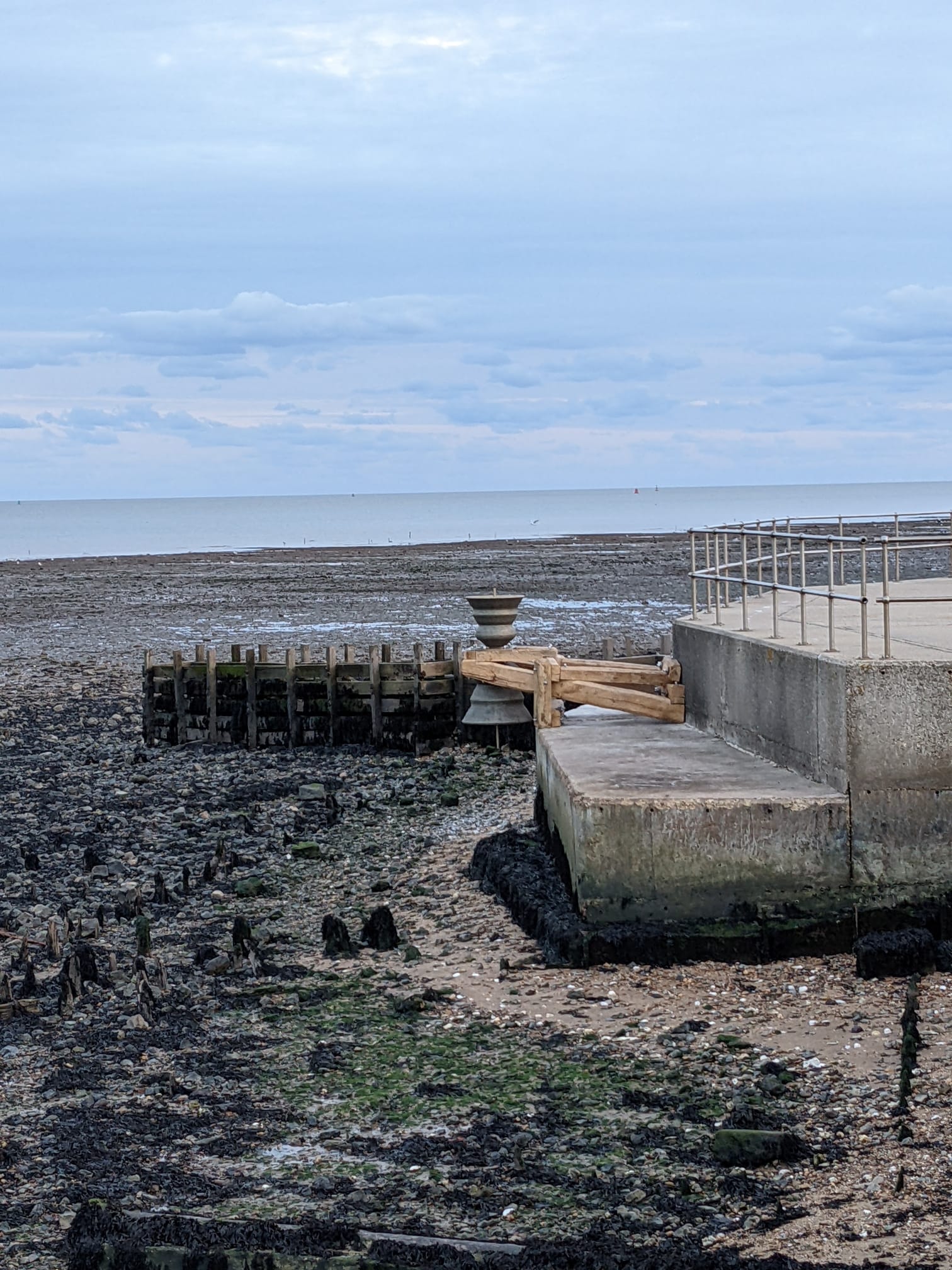
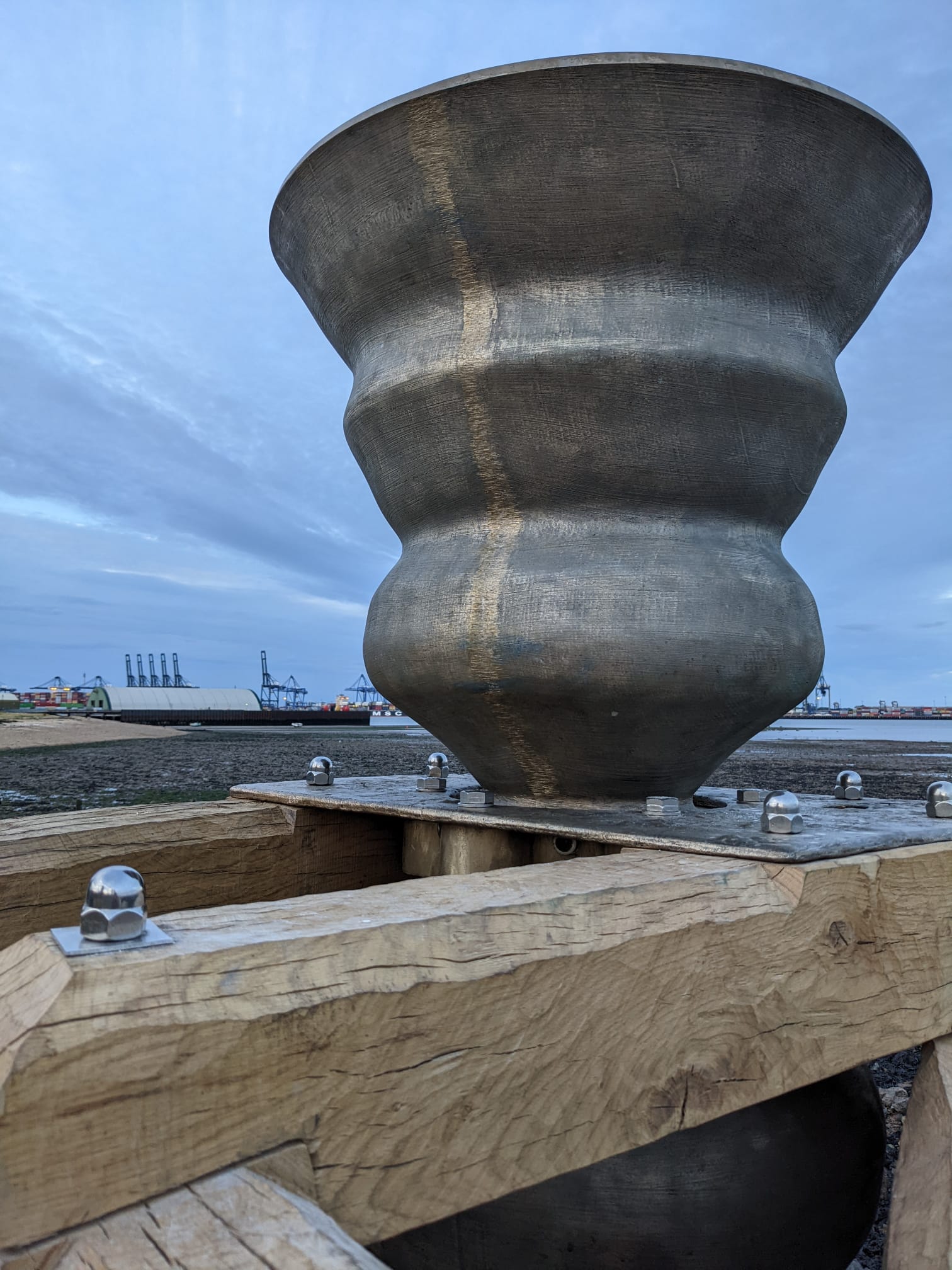
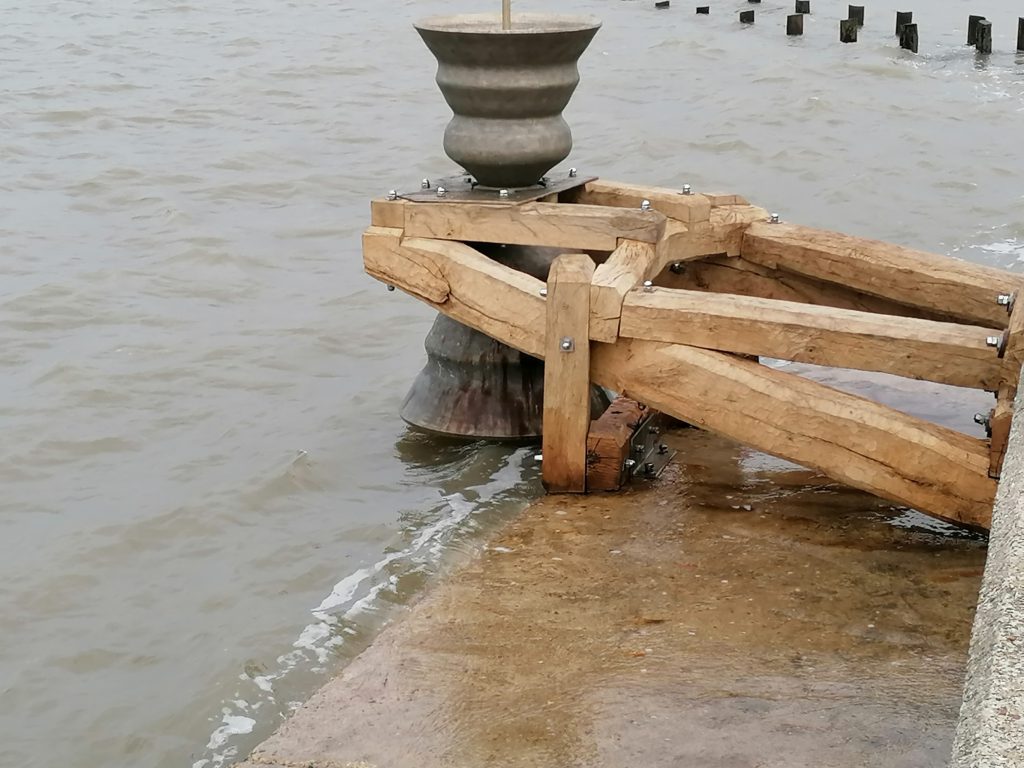
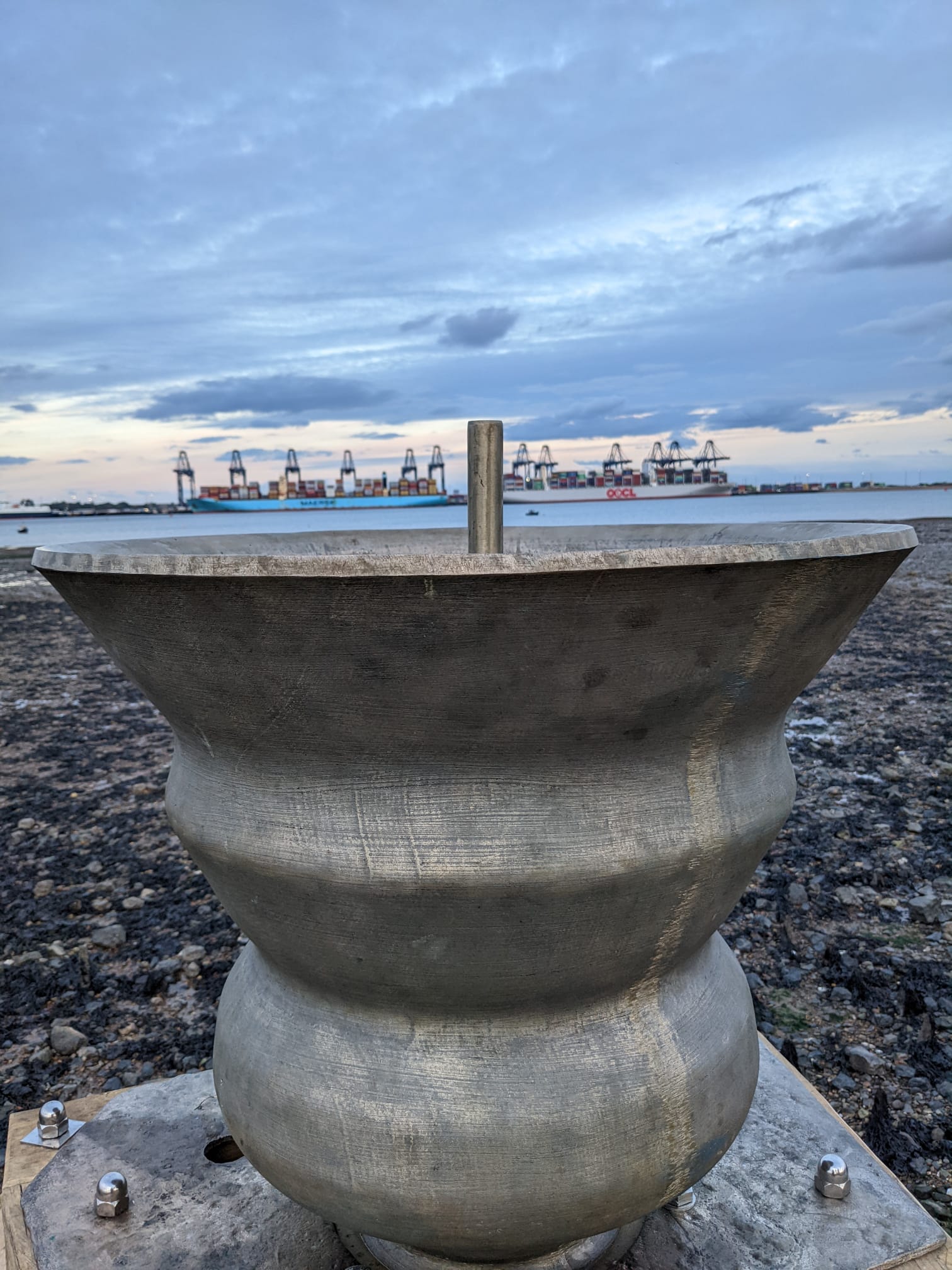
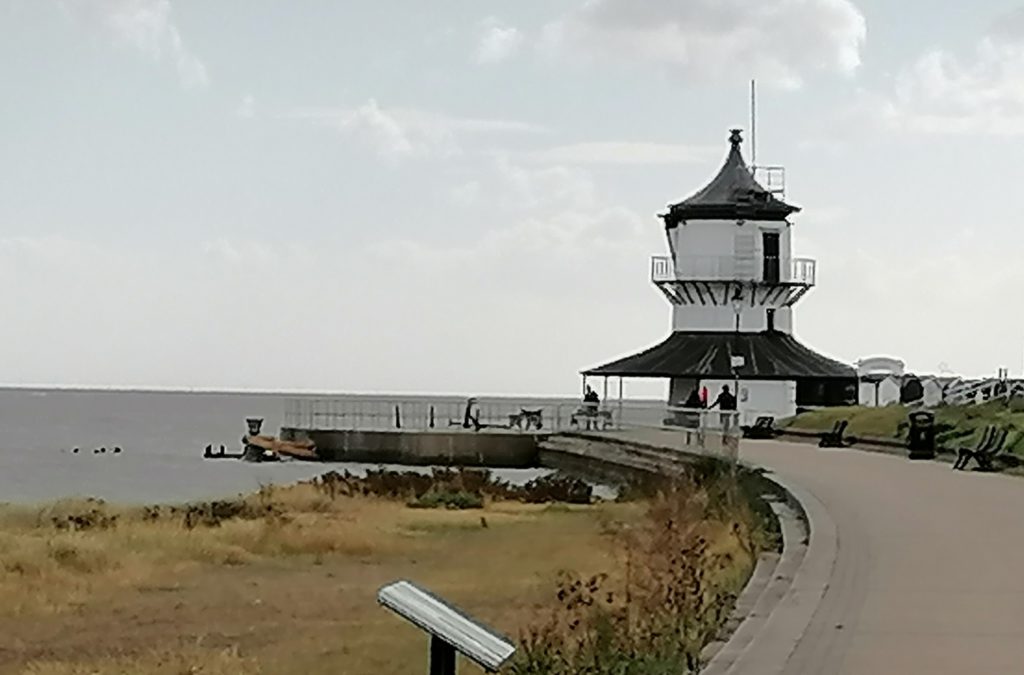
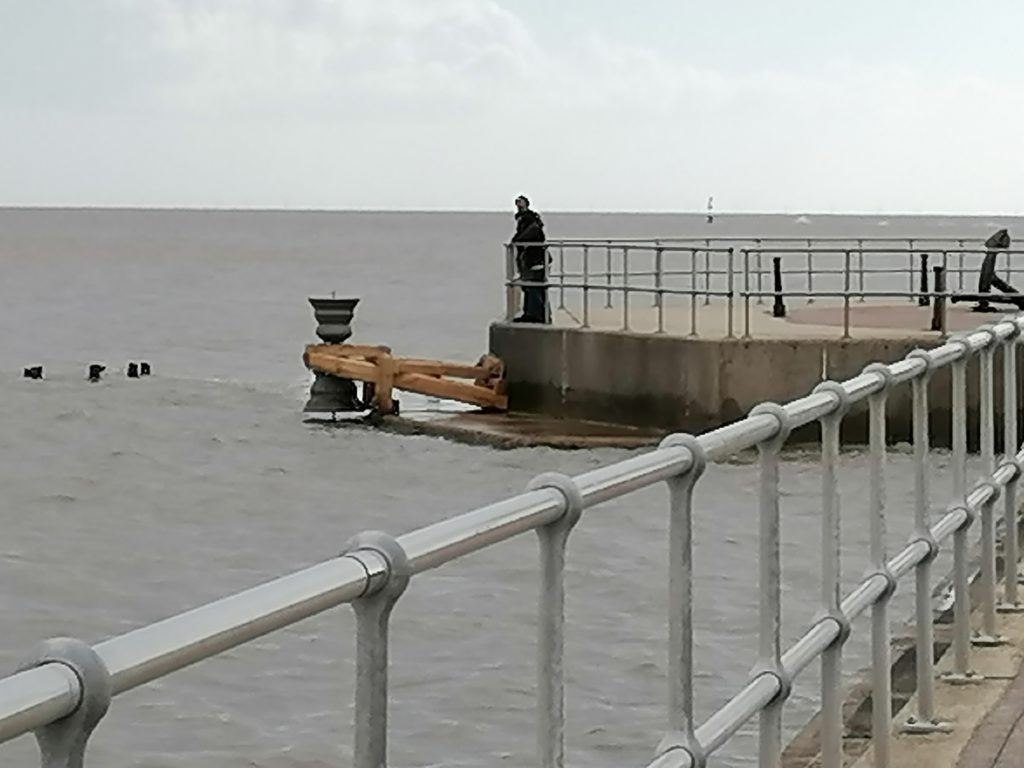
The design and construction of the mounting of the Harwich bell marks a departure for Time and Tide Bells. It is made entirely from oak, in fact an oak that was blown over near Marcus Vergette's studio in Devon. As a result it is extremely low in carbon content - very little steel. These photos are from the studio.
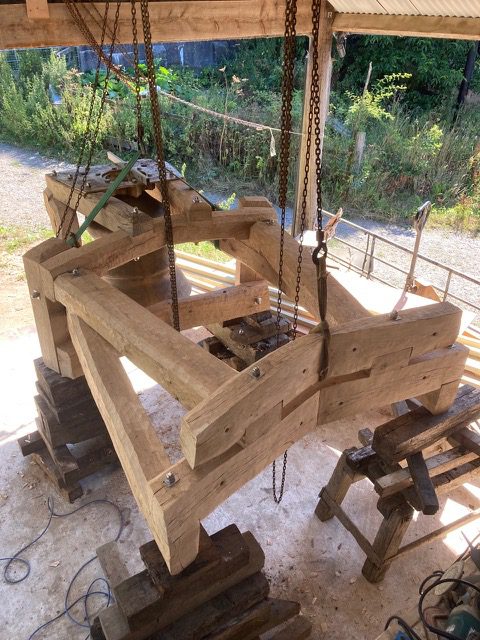
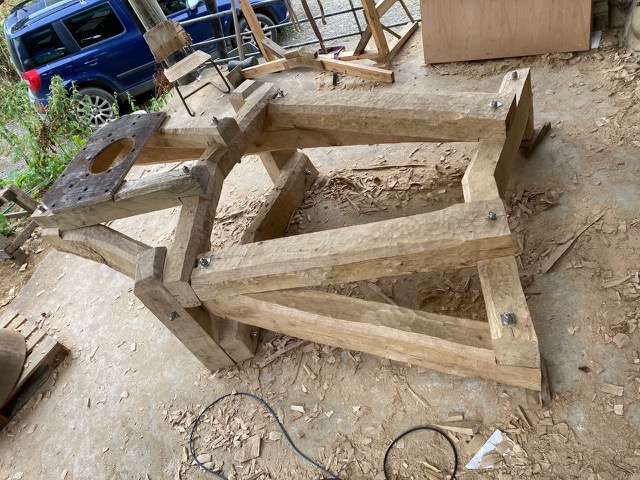
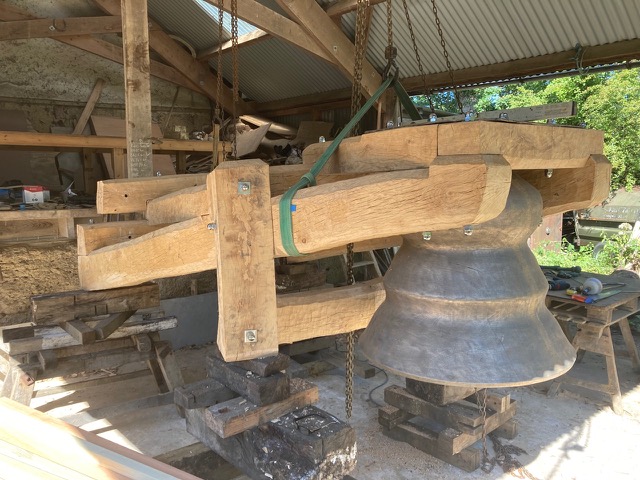
The installation was undertaken by partners Trinity House, a charity with a range of duties including General Lighthouse Authority, which amounts to maintaining lighthouses and buoys round the UK coast. It is based in Harwich.
Trinity House takes safety very seriously, so our cameraperson was not able to get very near the action!
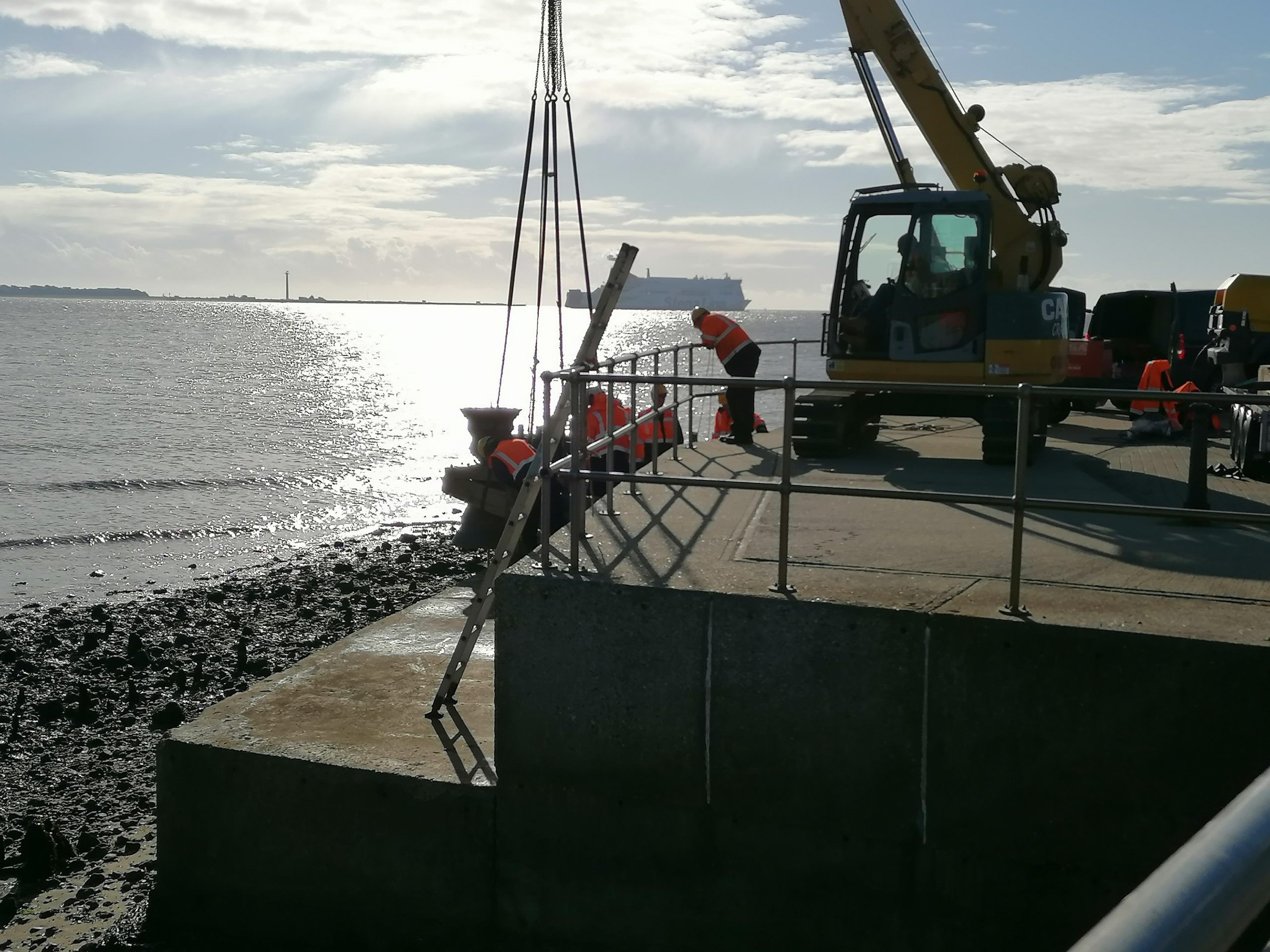
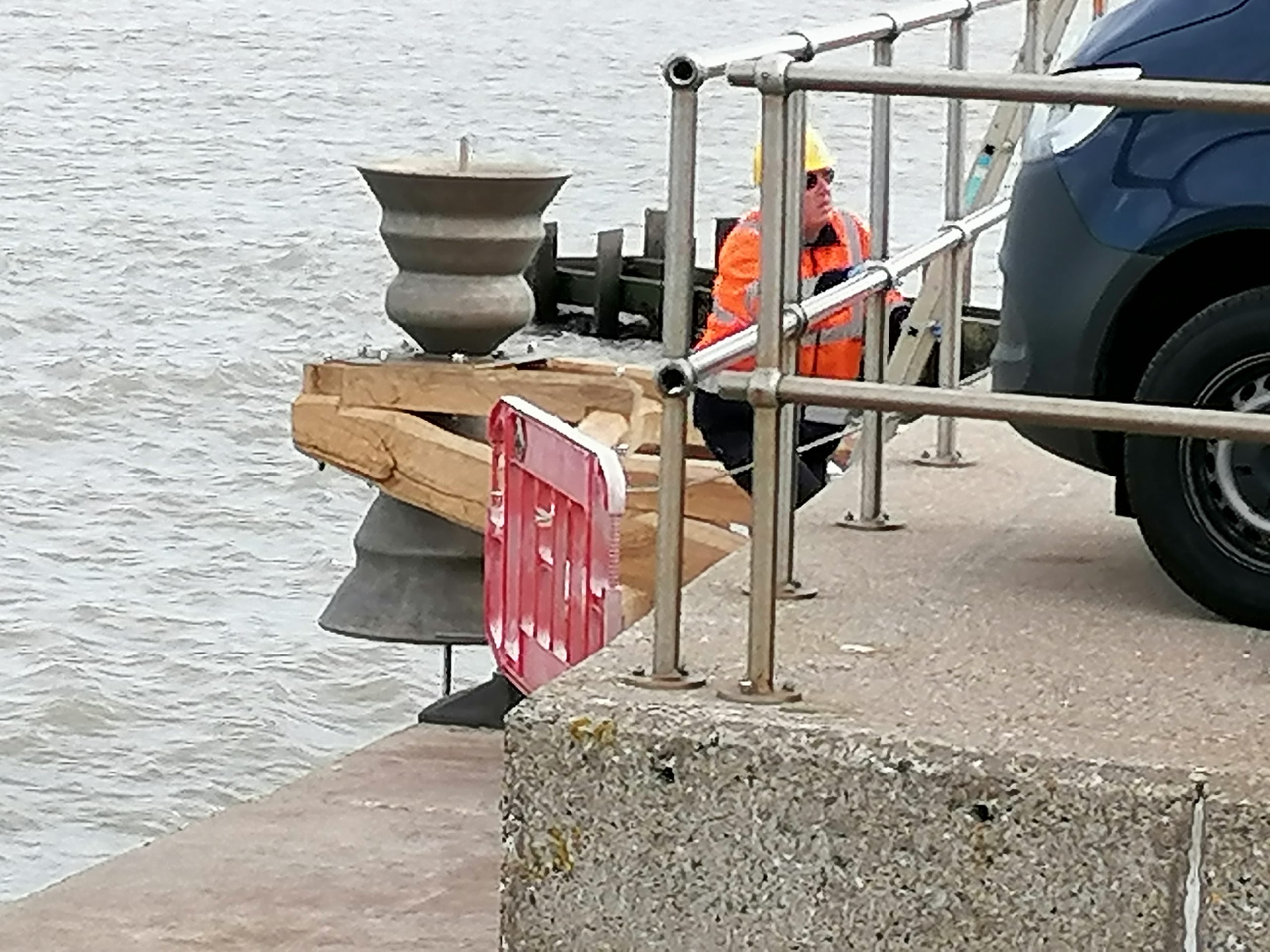
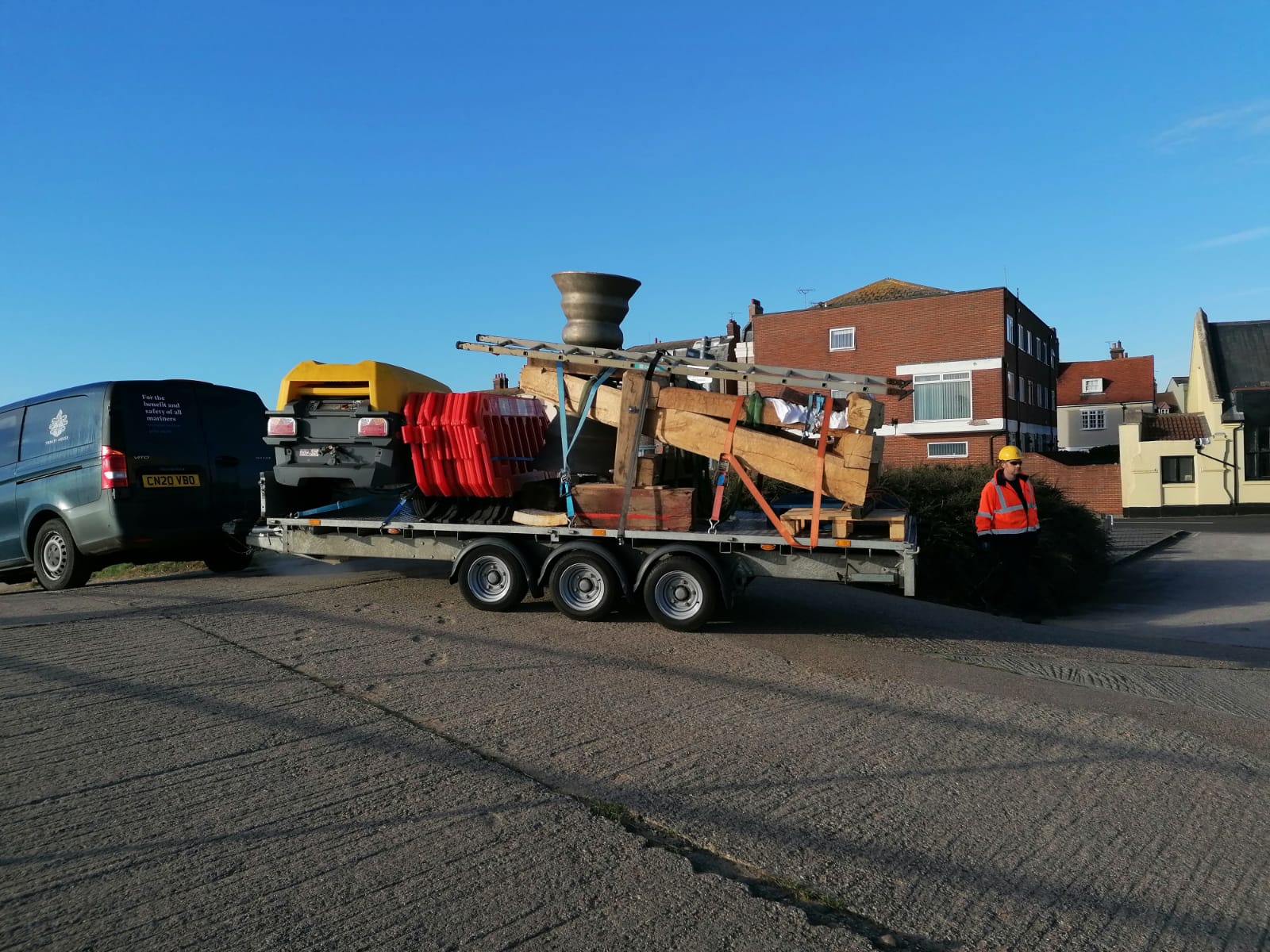
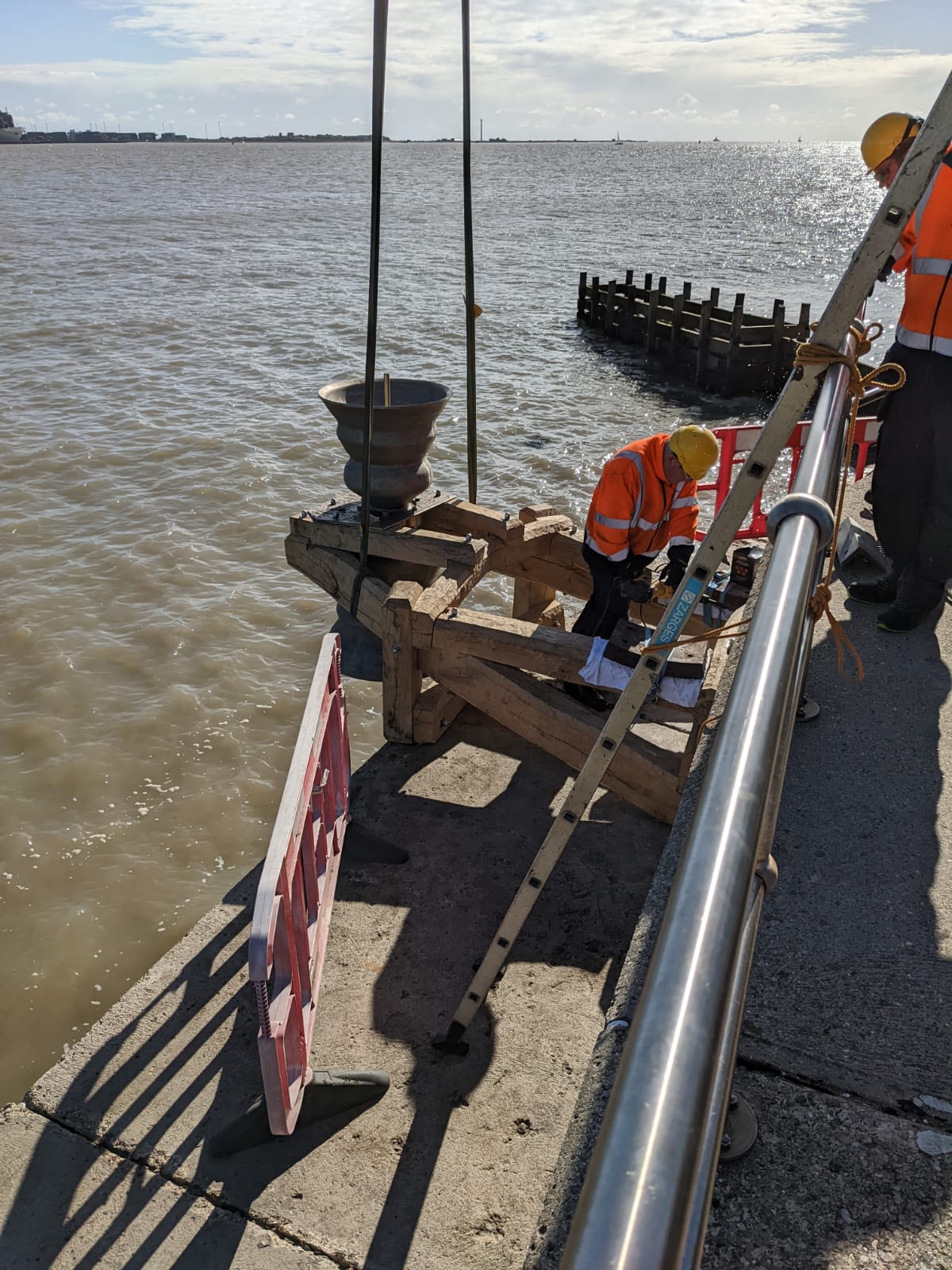
This month's recording at high water springs is dedicated to mothers: Pete's mother-in-law Eileen McDonald, his mother, who died in February aged 100, and Barbara Wood, who died in August.
After a long period getting funding and developing the design, the Happisburgh bell is at last taking real shape. Shown below is the radically different structure on which it will be mounted - a sled. Made of oak, it is a response to the continual erosion of the Happisburgh coastline, at somewhere around two to five meters a year.
The intention is that when the bell finds itself marooned at sea, it will be dragged inshore on the sled at its base. This is yet another commentary on the transience of this part of the coast, indeed of much of the East coast of the UK. For more information about coastal erosion in the area see here or here.
There is no date for installation yet, final permission is still required from the Marine Management Organisation, but there is a fair chance it will be in the Autumn of 2022. Until then the bell is a popular feature in residence at the local primary school.
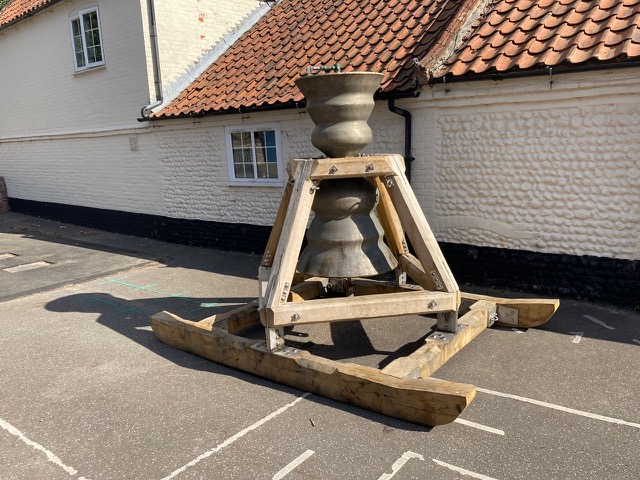
After a huge amount of preparatory work, the Harwich bell will be formally revealed at 11.30 on Saturday October 8th. This event will form part of the Harwich International Shanty Festival, a huge gathering of Shanty-lovers. They have written a special Shanty for the installation.
Marcus Vergette has chosen a novel structure for the mounting of the bell. Made of oak, it will greatly reduce carbon emissions compared with a metal structure. The photos below show the structure under development at Marcus' studio, together with



The photo below shows it being unloaded at our partner for the physical installation, Trinity House (responsible, among other things, for the management of lighthouses around the coast, and based in Harwich).
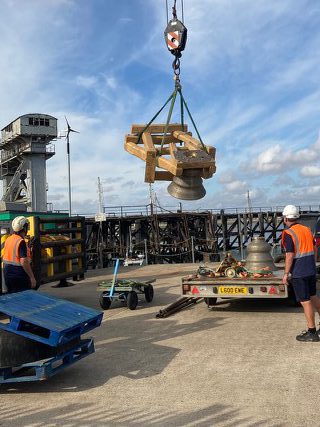
Almost as old as the oldest civilisation is the myth of the flood. The story of a few who survive the waters through divine intervention, and the help of a boat… but the flood we face is not a myth, and we have no one to save us but ourselves….
…the opening line of this spectacular performance event held on the beach at Cemaes close to the Time and Tide Bell with the extensive sands and the sea as a backdrop. Cemaes likes boats and the rise and fall of the sea is the daily experience for many – the work could have been written for us. Entertaining, moving and provocative in equal measure, the event was created to jolt locals and holiday makers alike out of their complacency with a profound reflection on the future.
Sunday 24th July 2022 was stormy, following a day of indoor workshops on a showery Saturday. The lovely group of young performers set up the scaffold construction on the wet sand as the tide receded and we all stared at the sky. An ad hoc performance in the drizzle ahead of the main event attracted some curiosity. Who are these guys? But by 3pm the tide turned, the sun came out and the crowds assembled. In the background of some of the photos you can just see the sandstorms blowing across the very exposed beach – it was indeed blowing a gale. Highly experienced performers they didn’t flinch and carried it all off perfectly, together with an interlude from the doughty band of kids showing off their movement techniques. They absolutely loved being part of it.
The powerful soundtrack of spoken word and music was an essential part of this moving theatrical event, created to highlight the growing and now inevitable threat to coastal communities from climate change. Passionate about a call to action the visiting group brought in local climate change experts Robin Grove-White and Frankie Hobro from Anglesey Sea Zoo to stimulate discussion amongst the audience.
Take away points: Personal action to reduce one’s individual carbon footprint does help for starters but collective initiatives and lending our voices to campaigning groups are vital both for morale and for influencing political decisions. If there was any hopeful message from that call to action it was the transition to renewable energy in which Anglesey is at the forefront. Right behind the beach at Cemaes is one of Wales’s first wind farms, over twenty-five years old now and there are many new wind, solar and tidal renewable schemes either built or in the pipeline. Clearly the way to go – ‘we have no one to save us but ourselves’.
Photo credits: Gareth Jones, Helen Grove-White
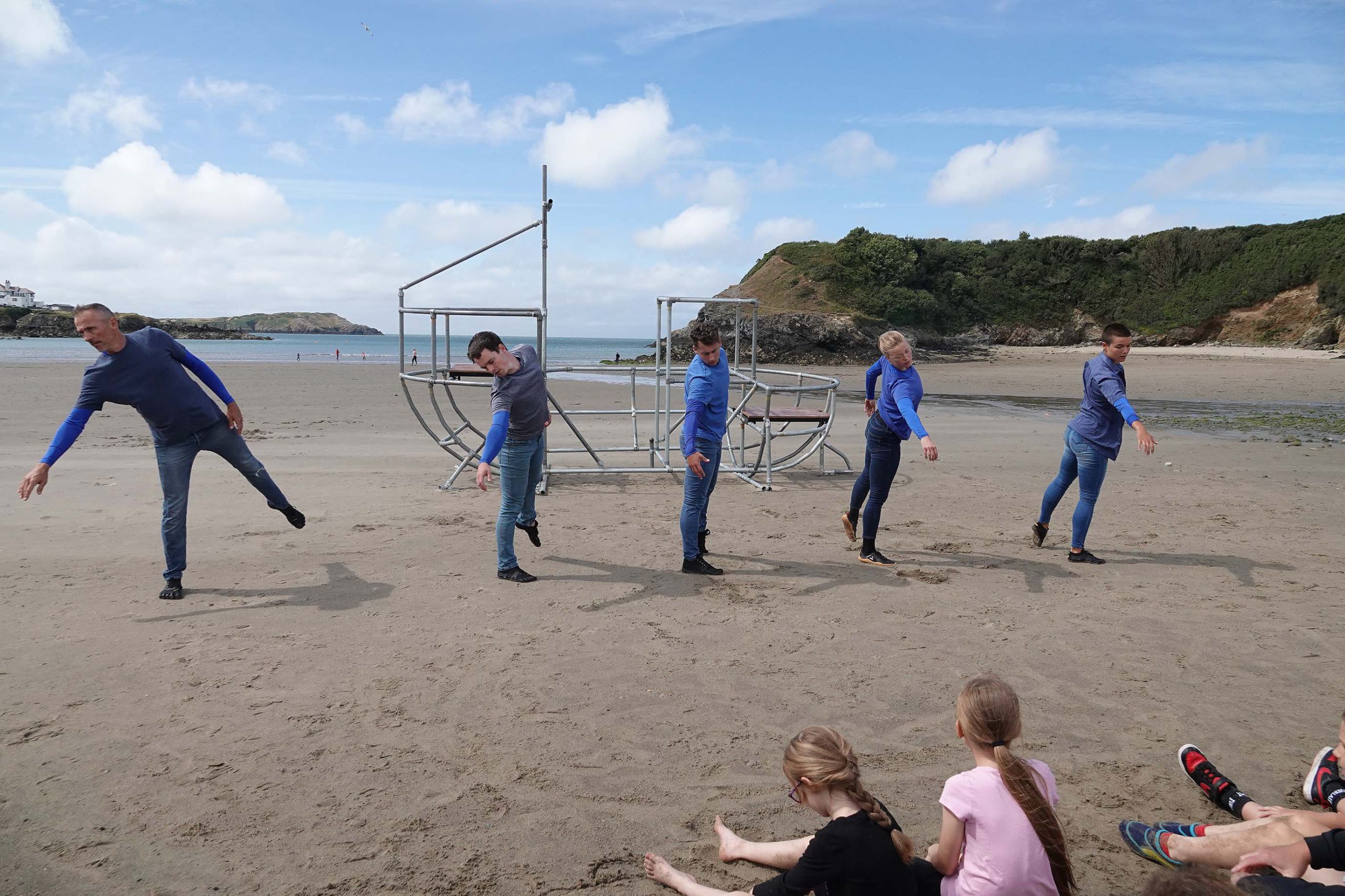
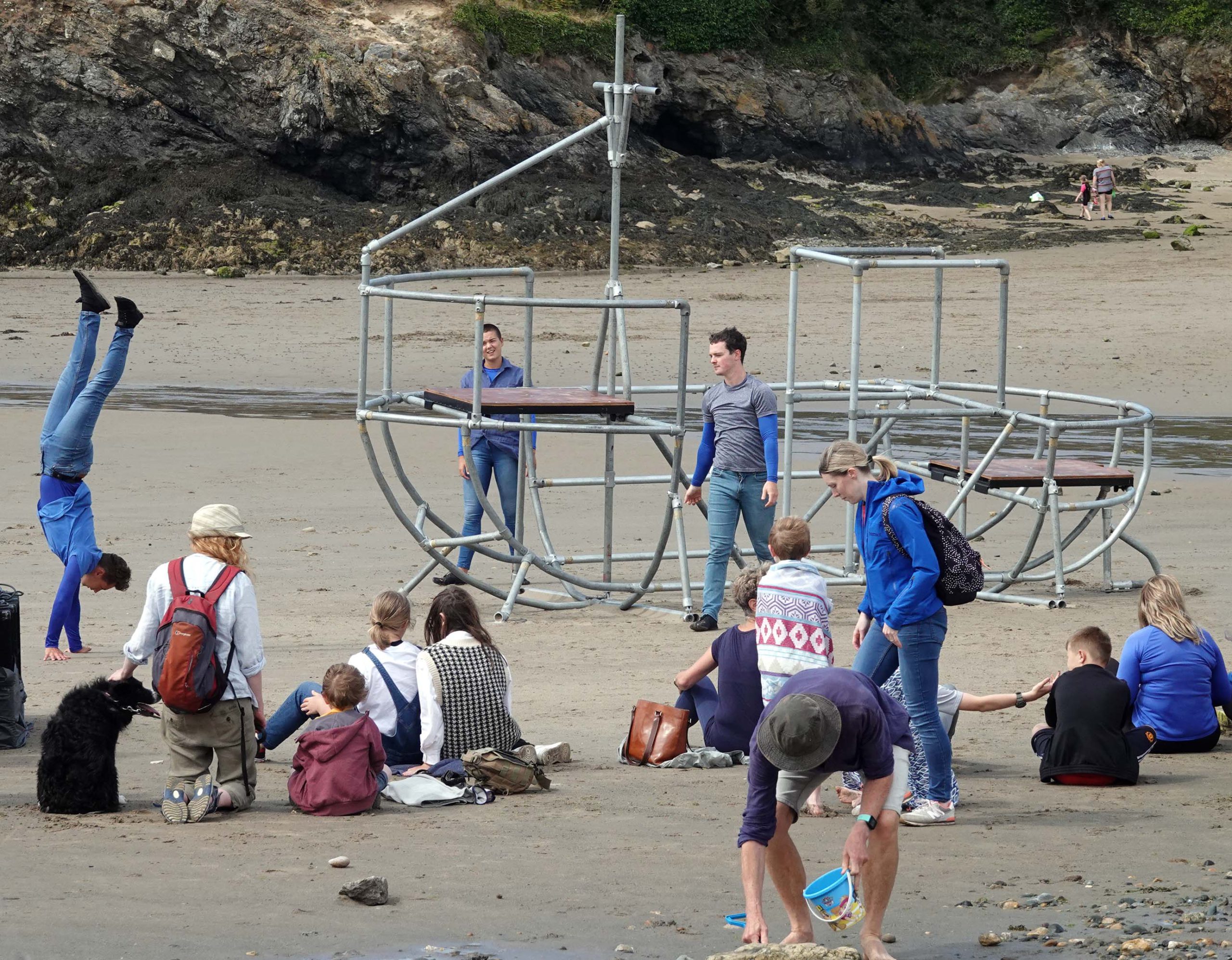
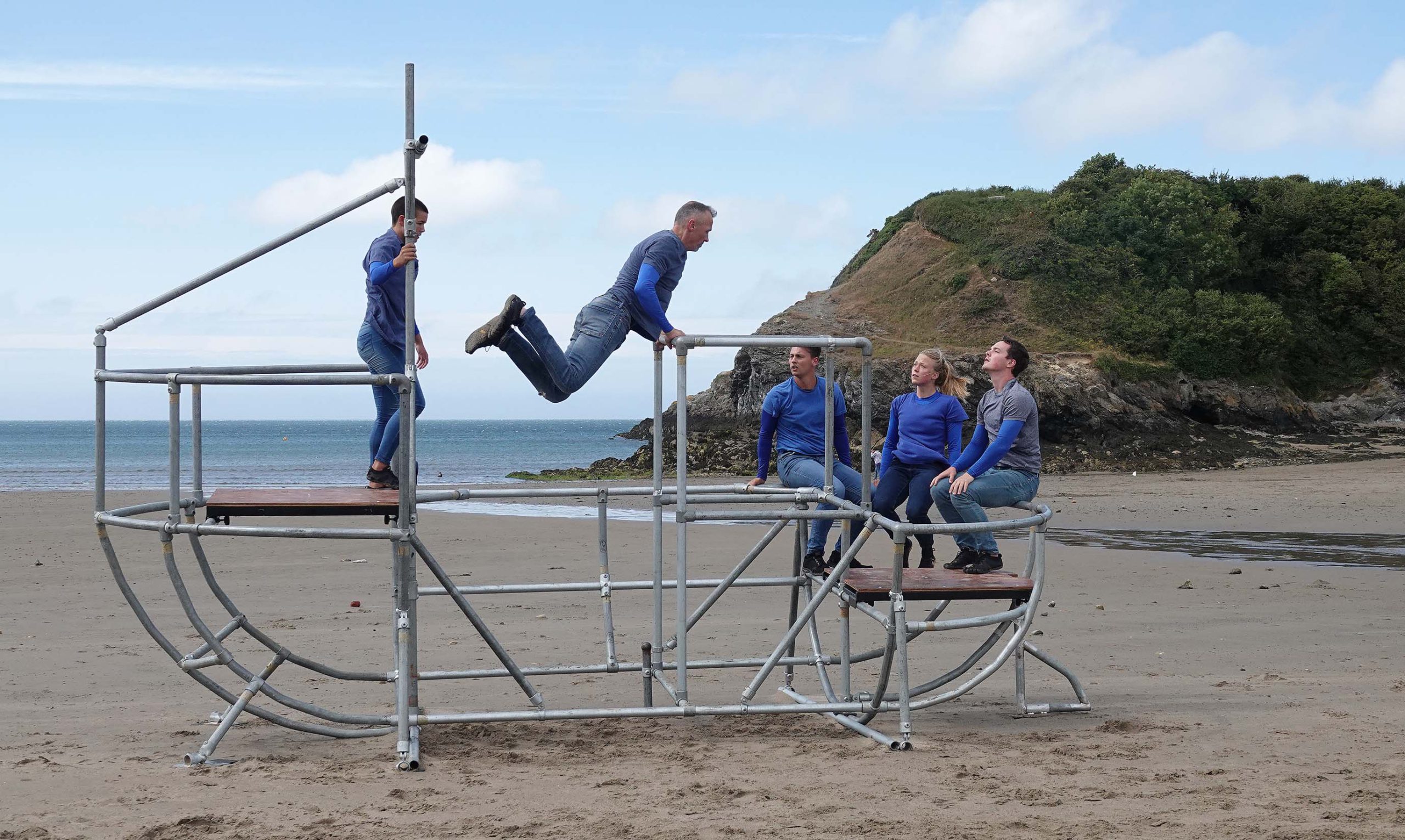
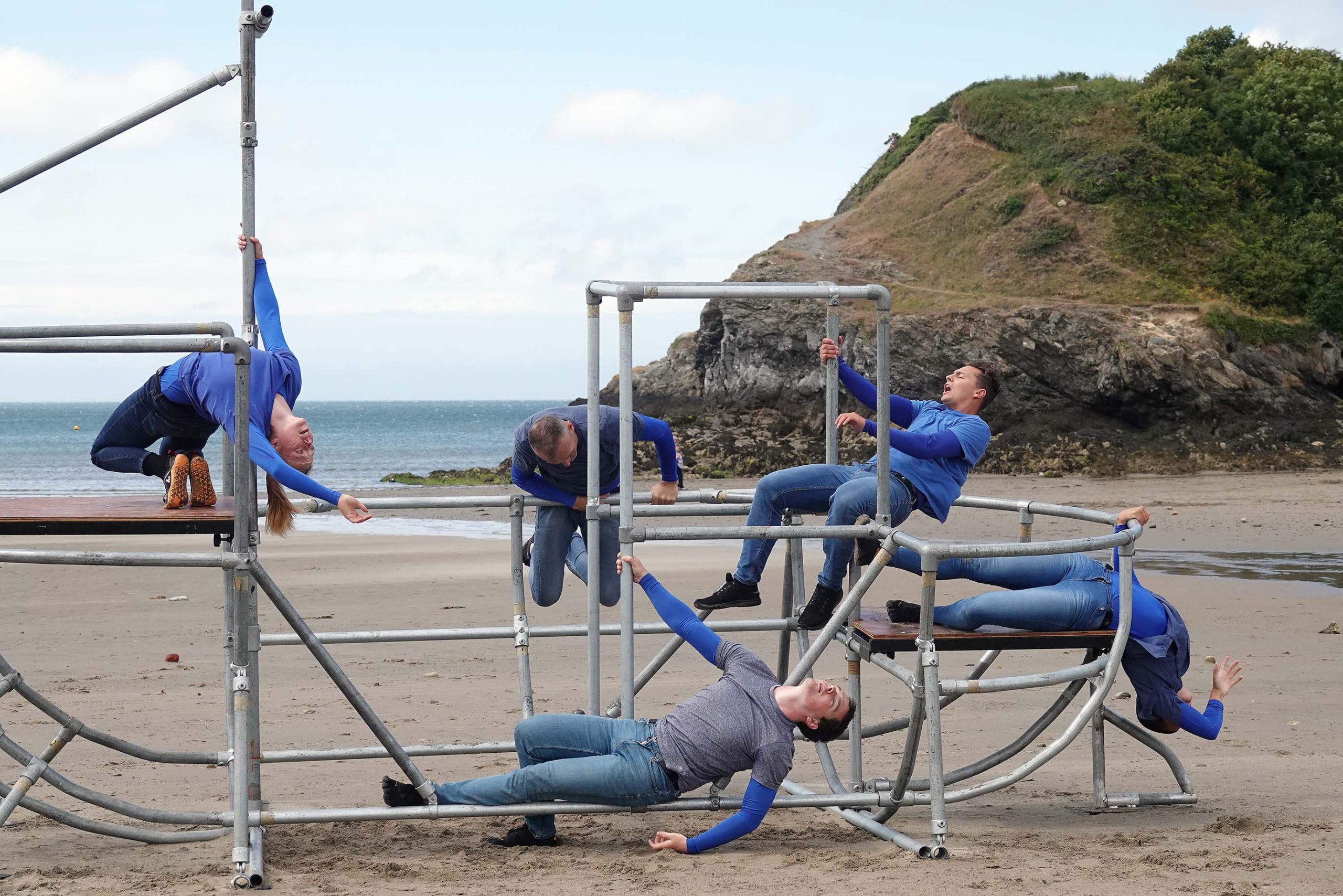
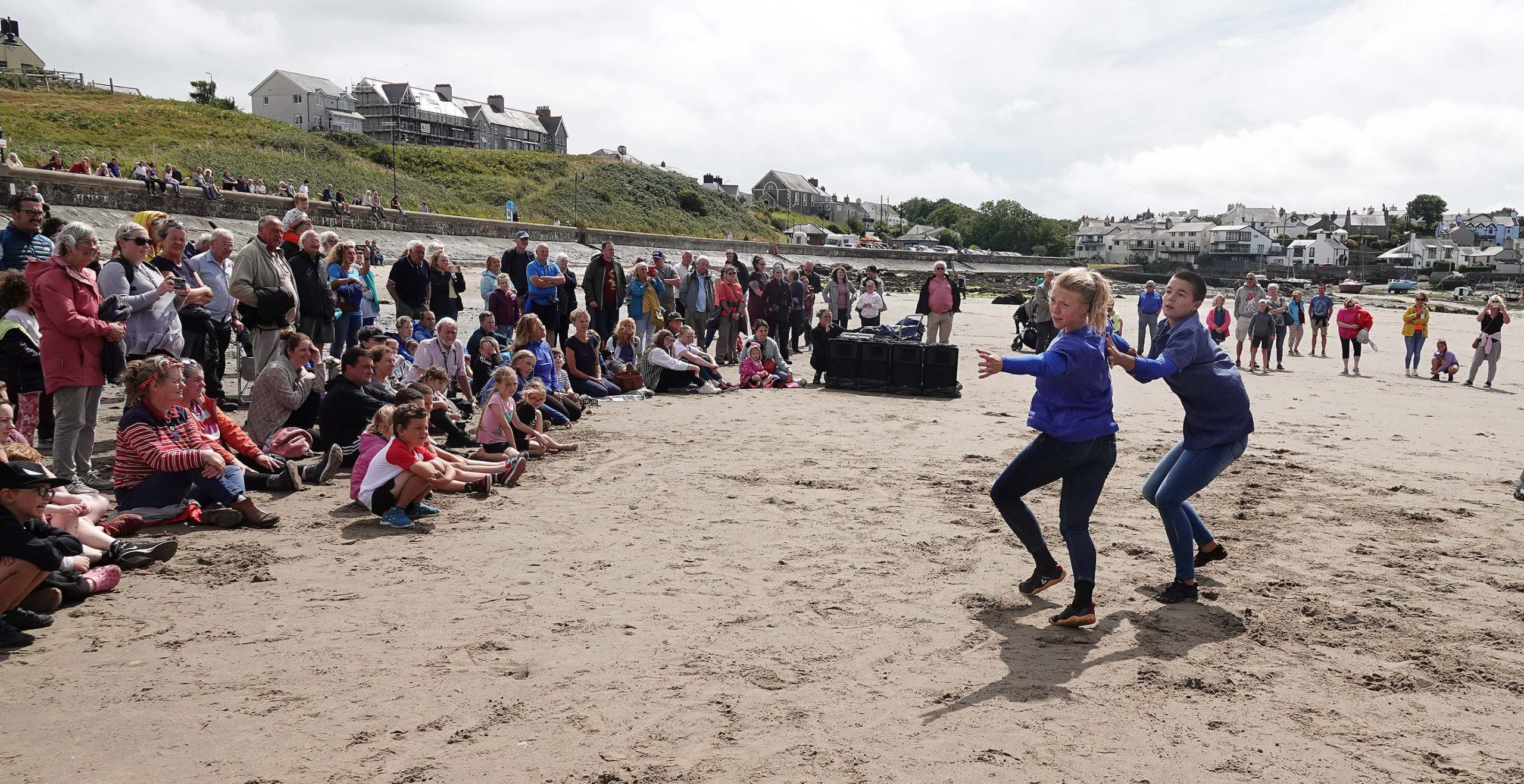
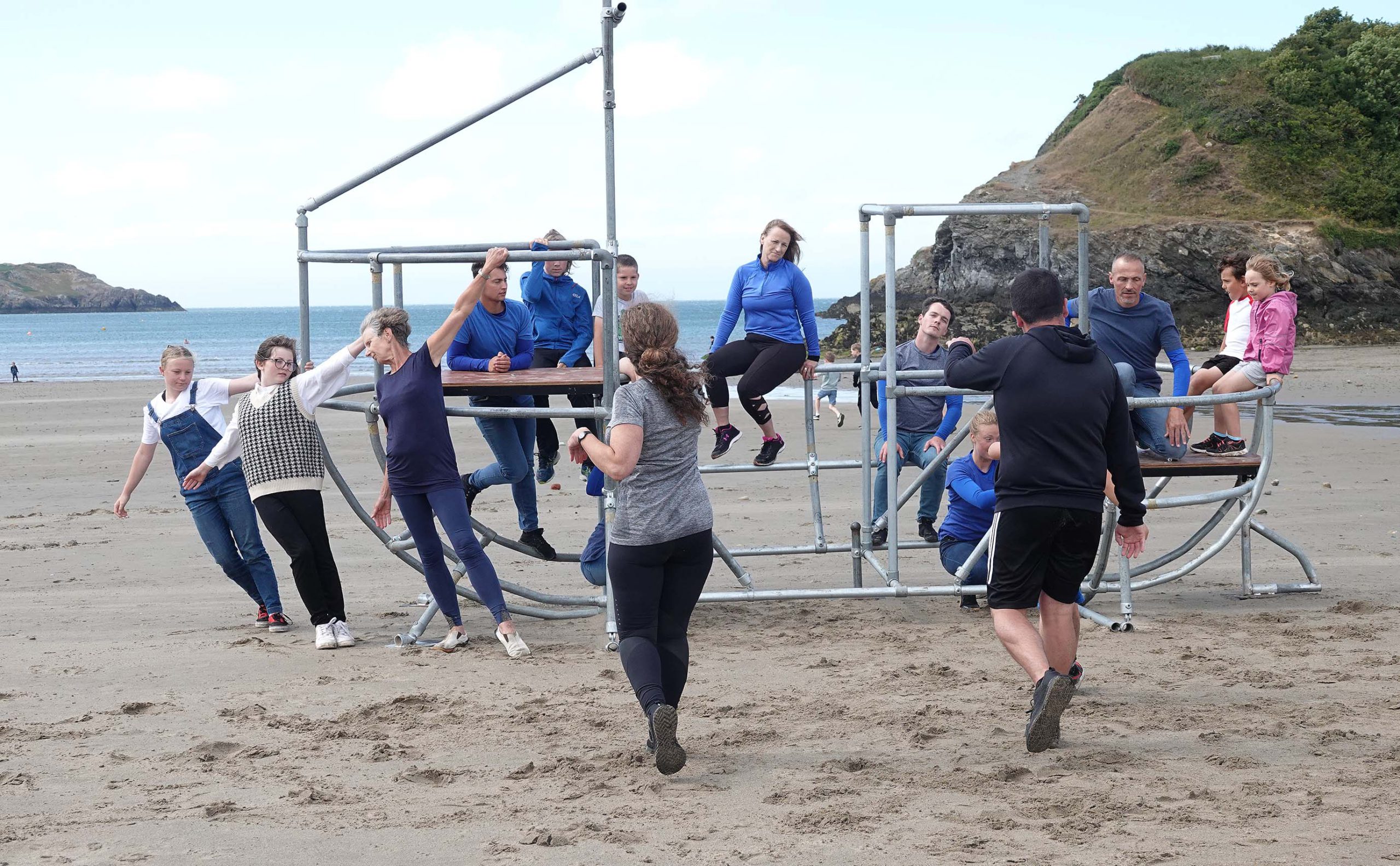
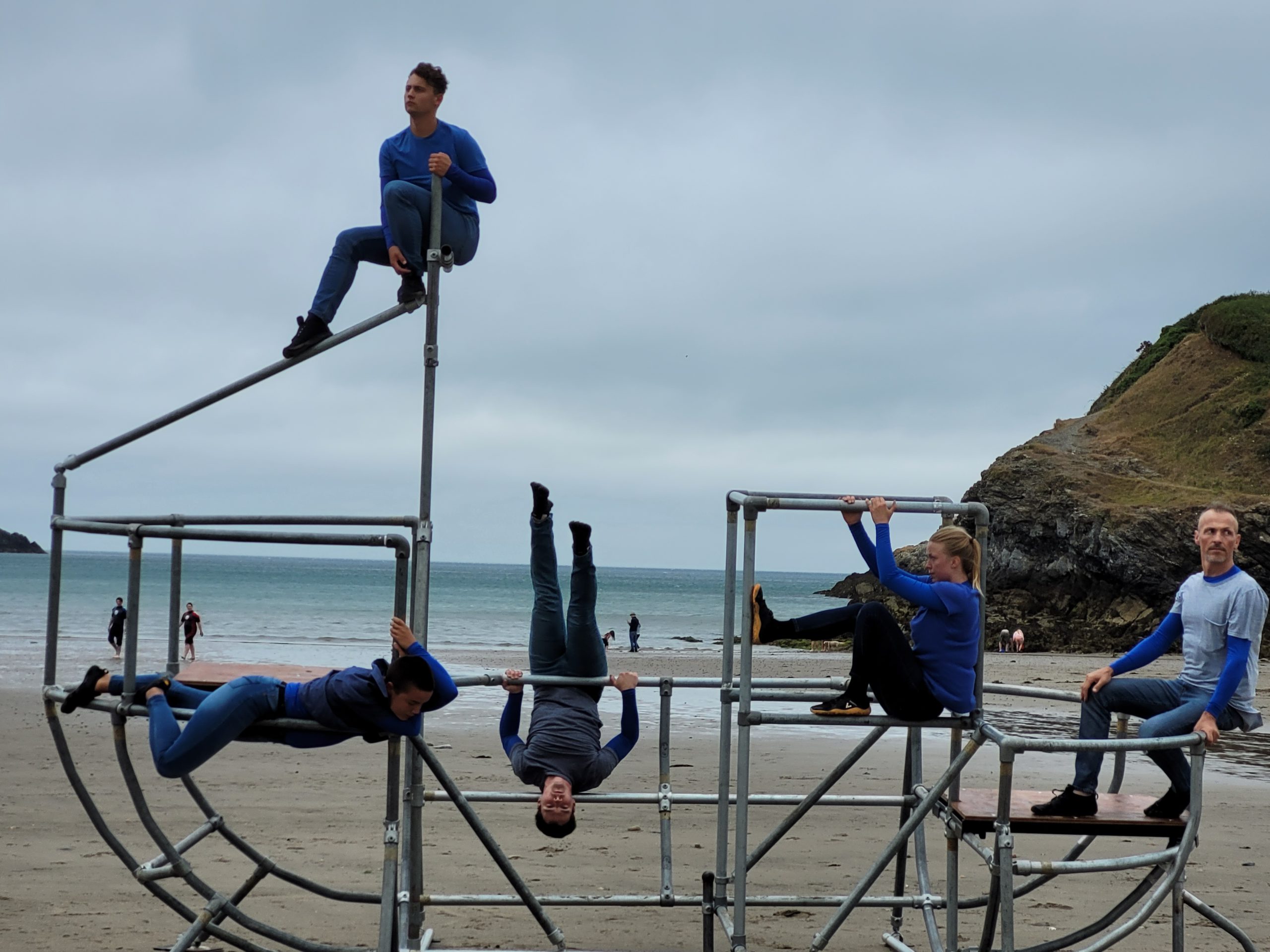
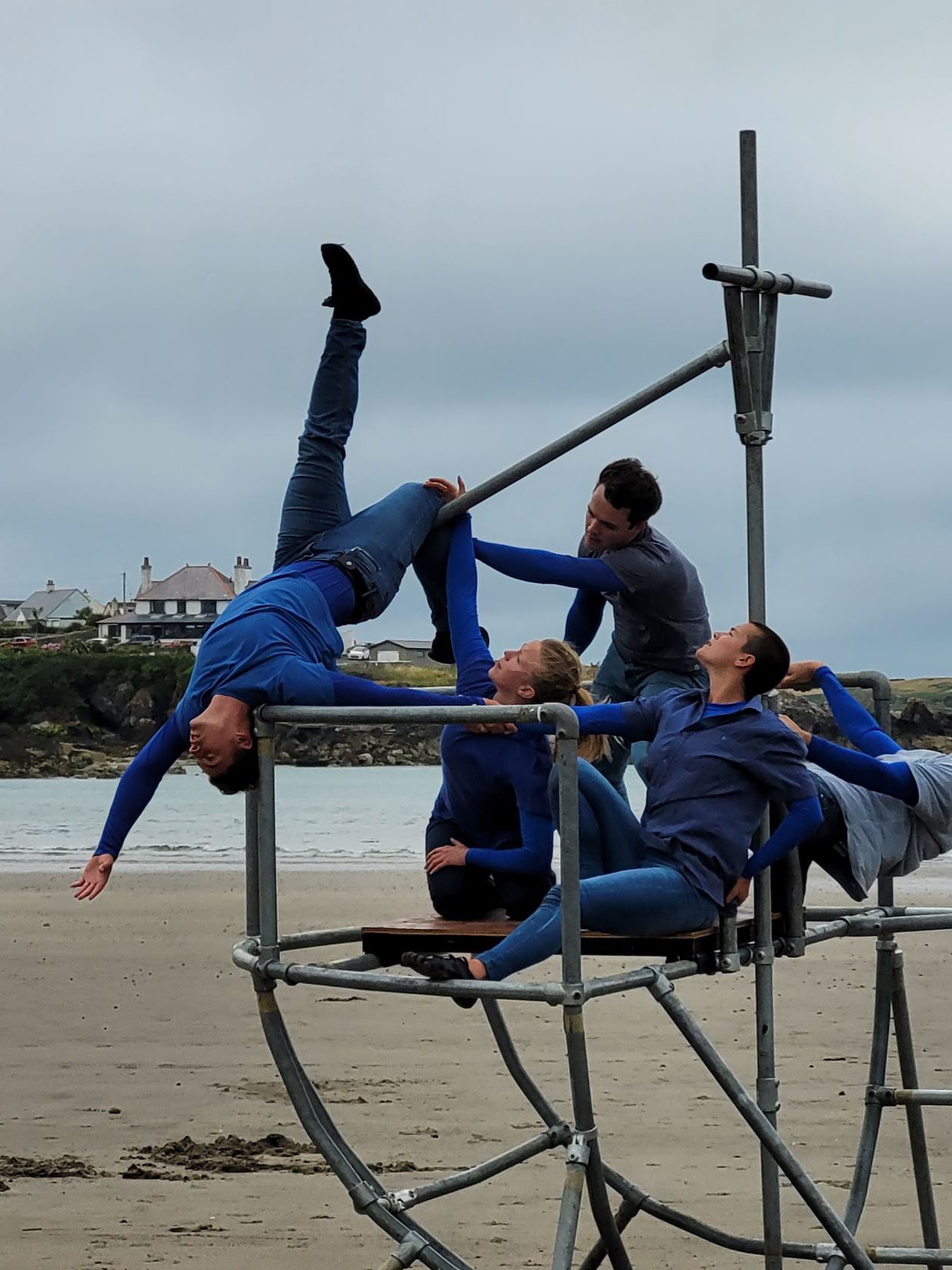
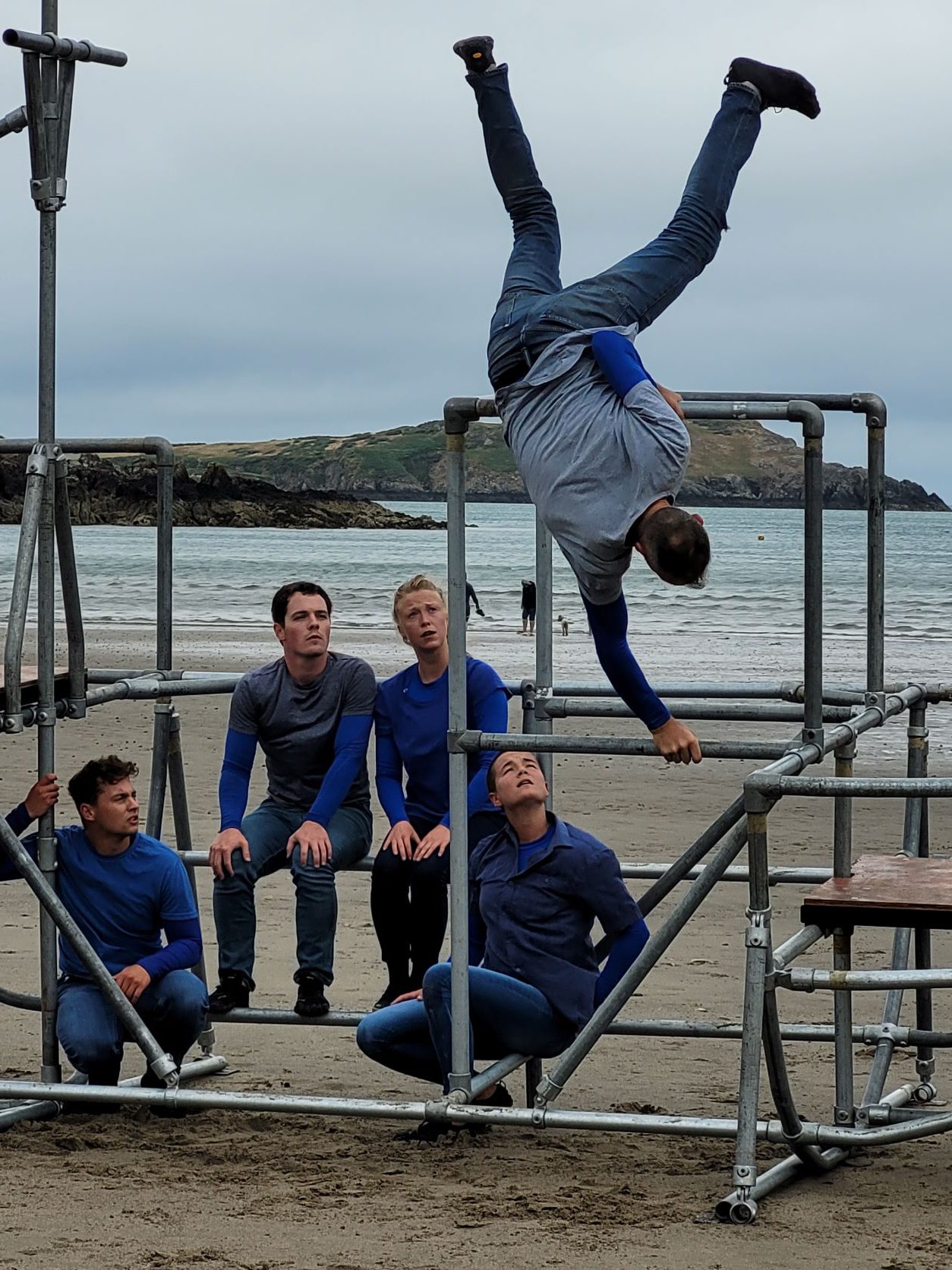
It was thrilling to be part of the beginning of Marcus Vergette’s Time and Tide Bell project, as right from the start it was clear it would be a major new artwork. It brings together art, sculpture, the environment with the rising sea levels, and music. A true innovative artwork! Even the Bell itself is breaking new water, in that it rings chords! Appledore has had strong links with the sea because of its boat and shipbuilding heritage, and just at a time when all of that is in transition it is important for our community to find new ways of connecting with the tidal sea. We have the highest tidal range in the world and the Bell speaks to us about that in a beautiful idiosyncratic melody.
Sandy Brown, ceramicist

This poem was originally a contribution to Tania Kovats' film COTIDAL - but we thought it and its film deserves a place of its own.
This month Pete used a new clanger, in memory of his friend Tim Fleming. Sadly there will be a pause in Moser's tour of bell sites, as he has upcoming operations on his knees.
Pete Moser's salute to high water springs on March 4 2022. His grand tour has been delayed a bit - but it will definitely happen.
Here is Jon Best's contribution to a number of poems written by the Poetry group in Par.
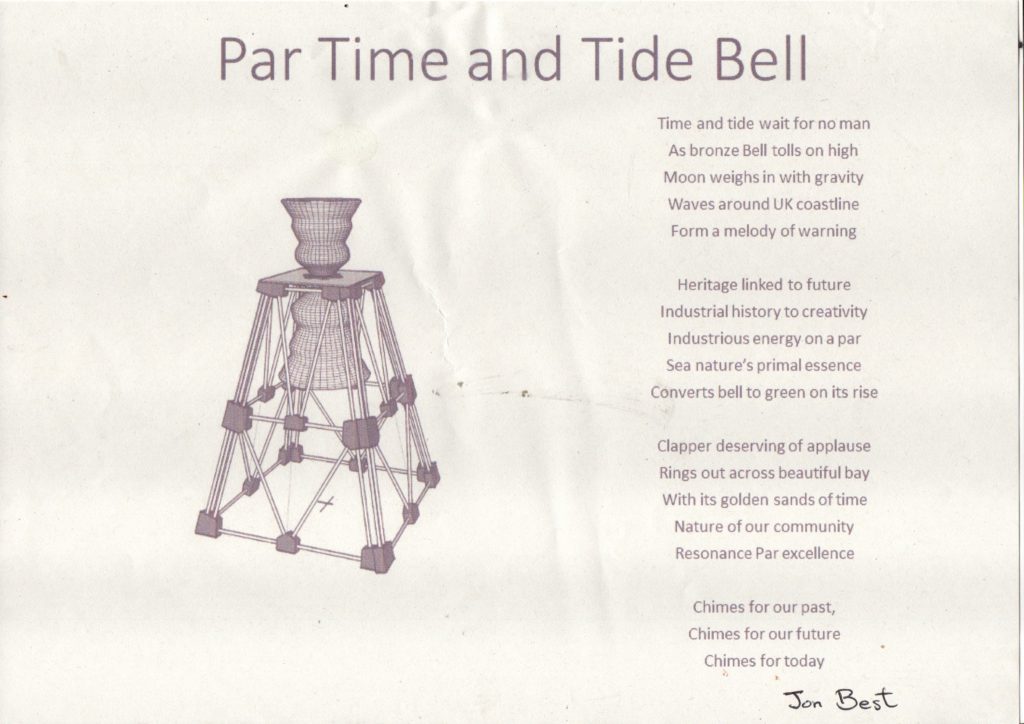
Saturday March 5th 2022 saw much fruitful work by Richard Parks, chair of the Friends of Par Beach. All to the backdrop of a half-bell just delivered by Marcus Vergette, currently in Cornubia, the local venue encouraging social enterprise, encouraging creativity and promoting healthy living.
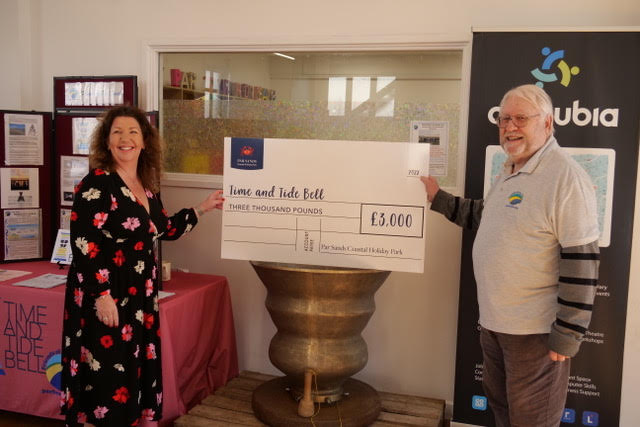
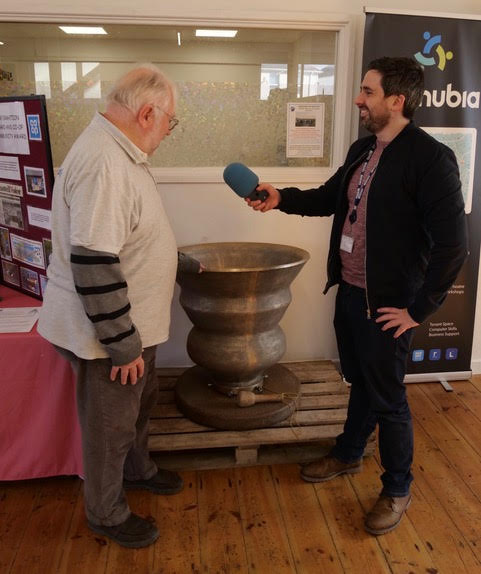
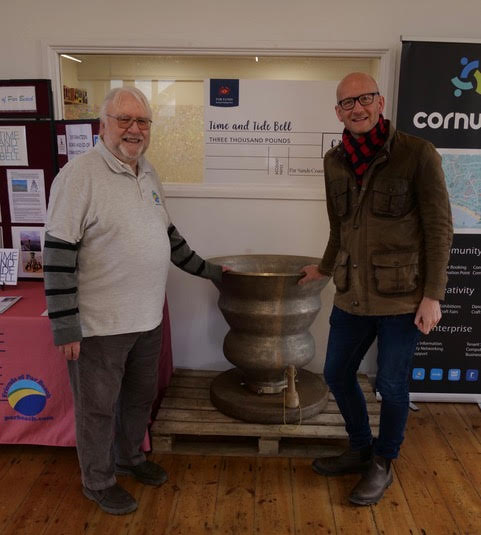
The first of the tour. Shame about the baseball bat.
One of the key things about the Morecambe bell is that your feet stay dry no matter what the state of the tide. That applies to the London one too. But the others....
It seems I have undertaken to play all of the bells this year! Oops!
I live in Morecambe and for the past 2 years I have played our Tide and Time Bell on the
highest tide of every month. I love it ! We started putting films of these improvisations
online and there are now thirteen on the Morecambe Artist Colony (MAC) you-tube
channel, played in all sorts of weather.
Random musical adventures like this are such fun and so this plan to travel the country on
train and bike seems like a great idea…
Will the bells sound different ?
Who will I meet in each place?
How will it help to highlight the issues around the climate crisis that are at the core of the
whole programme ?
Today the tour started on our Bell at the 12.47, 10m high tide with my friend Ben McCabe
from More Music, filmed by Graham Dean from MAC.
Now I am planning a trip in two weeks time to Camaes on Anglesey to play their Bell at
12.22, a 6.72m tide. I am going a few hours early to play it when I can actually walk across
the sand and rocks because at high tide I will have to swim out to climb up onto the
structure to play the bell. The first adventure!
Then Appledore, London, Aberdyfi, Mablethorpe and … the Isle of Lewis ??
These are the mallets!
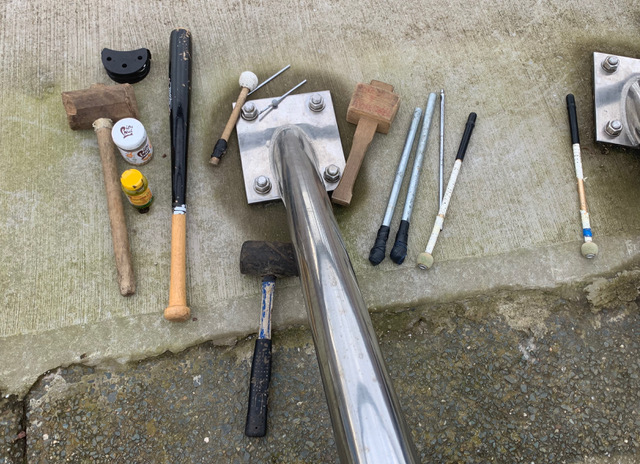
NASA has made a rather weird video of the tides from a global perspective, based on data from satellites. The fact that the UK is squashed into the top right hand corner is frustrating!
Pete Moser ringing the bell on a chilly day at High Water Springs, January 5 2022.
In October 2021 we presented a half-bell to the Mayflower School, which is near where the bell will finally be sited at the Lower Lighthouse. Much enthusiasm!
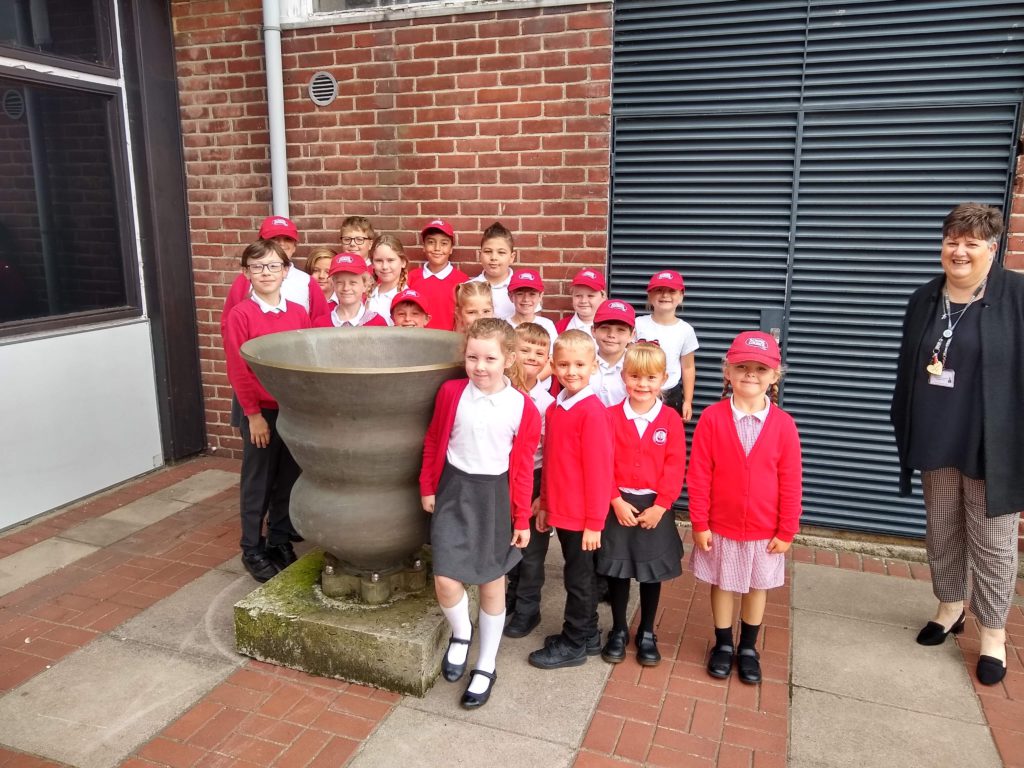
On a windy day in Morecambe, Pete Moser rang out the bell for COP26. The same day that Barack Obama arrived in Glasgow....
With grateful thanks to Sue Atkinson here is an impression of the bell to be installed to the West of the Rotunda (itself hiding a sewage pumping station). It isn't installed yet - it just looks like it.....
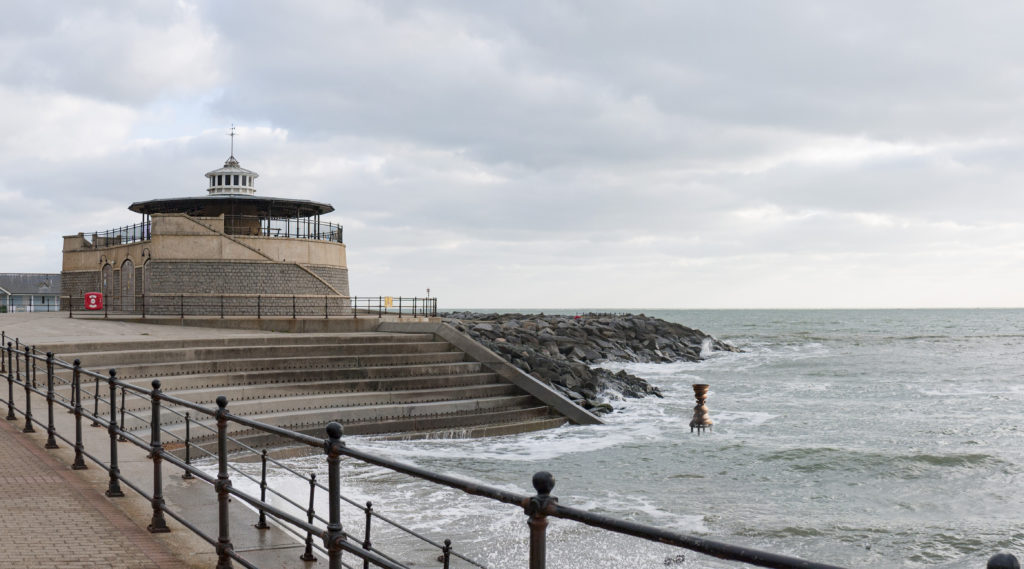
Here's the view in the other direction (taken on a sunnier day).
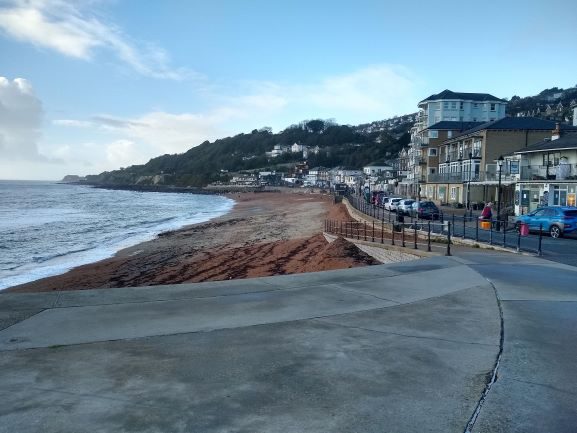
This month Pete Moser is accompanied by Ben McCabe. For the non-initiated, Springs (the opposite of Neaps) is the highest tide of the month.



